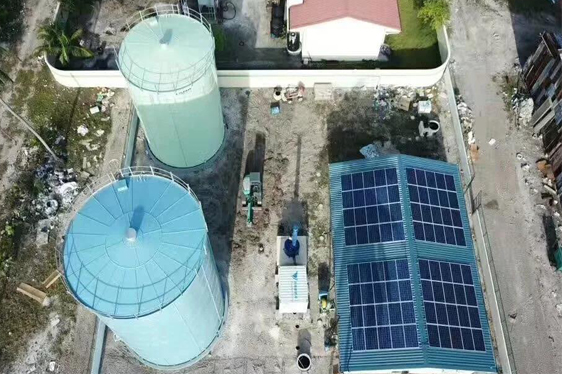Apr 01, 2021
Water and energy are two key factors in human life that always control the growth and development of human societies. Climate changes, increasing the population in urban areas and industrialization, have increased the demands for fresh water around the world. Estimates show that a small percentage of all freshwater produced in the world is from renewable sources.
By developing the technology, lowering equipment prices and increasing attention to the environmental problems of fossil fuels, utilizing renewable energy is growing. By providing a wide variety of conventional desalination methods driven by various types of renewable energy technologies in the world, water and energy legislators should choose different methods to meet the needs based on the local potentials by paying attention to the desalination processes and power systems. In some cases, concentrated solar power for thermal desalination or electricity generated by the photovoltaic plants for membrane desalination systems can be used in arid areas.

Definitely, the most problem of using renewable sources is their unsteady natures, which using storage systems or combining with other renewable sources can solve this problem. The reverse osmosis technique is a practical process in seawater desalination which 69% of desalination plants use this system. Solar energy is an important source of energy for hybrid systems. Geothermal has a steady performance at a specified depth. Ultimately, obtained results from energy and exergy analysis would have provided a better insight.
More than 70% of the Earth’s surface is covered with water; however, most of it is not suitable for human consumption. The magnitude of all water resources on the Earth is approximately 1.4 billion cubic kilometres, which roughly 97.5% of it placed in the oceans and only 2.5% could be found as freshwater in the atmosphere, icebergs, lakes, rivers and groundwater and just 0.014% of the total resources are available for humans (Shatat et al. 2013; Kucera 2019; Subramani and Jacangelo 2015).
The distribution of freshwater around the world is not uniform. In this case, unbalanced distribution caused that some parts of the groundwater resources have become greatly available to several specific areas with low population and convenient access to freshwaters such as the northern parts of Russia, Scandinavia, Canada, Alaska and southern parts of the South America. Additionally, areas with a high population or areas with industrial growth are more vulnerable to water stress and areas that are in arid regions also have a degree of water stress based on the ratio of water consumption to the amount of available water. Obviously considering the significance of upstream water use on downstream stress has a direct effect on water distribution (Munia et al. 2016).
Based on the defined indexes, various levels of water stress have been calculated by Falkenmark. In this classification, the water stress index (WSI) for lower than 20% represents no stress and if it becomes more than 70% expresses extreme stress (Falkenmark et al. 2007). The measure of water stress is the ratio of total water use (domestic, industrial or agricultural) to produced renewable water, including runoff in rivers and underground sources with little depth. About 2.8 billion people on the planet will face the problem of scarcity or water stress up to the year 2025, and by 2050 this value will be reached at 4 billion. In the future, some areas including South and Central America, Eastern Europe and Asia will face water scarcity (Kucera 2019). In addition to increasing population growth, pressure on water resources comes from increasing per capita consumption. There are different maps to determine current and predicted water stress in the future. The worldwide populace has nearly quadrupled in the course of recent years (last century), and it arrived at 6.5 billion until the end of the twentieth century. Regardless of just little varieties in per capita water utilization after this period, growth in total water utilization brought about an expansion in the population under water scarcity in the twentieth century.
How Do Solar Panels Help The Environment?
Nov. 23, 2021
Follow Us
Navigation